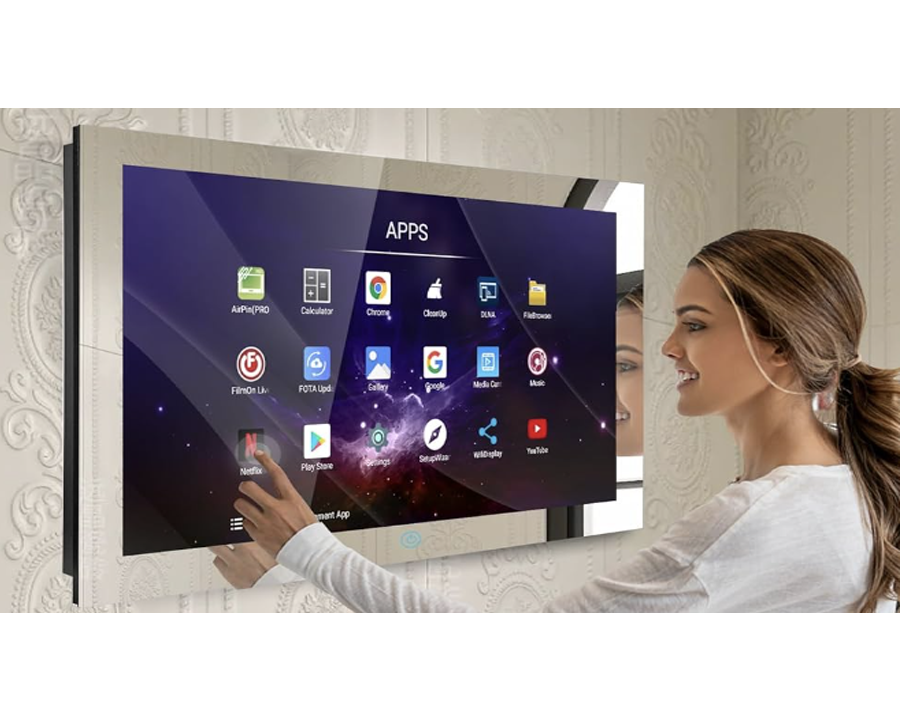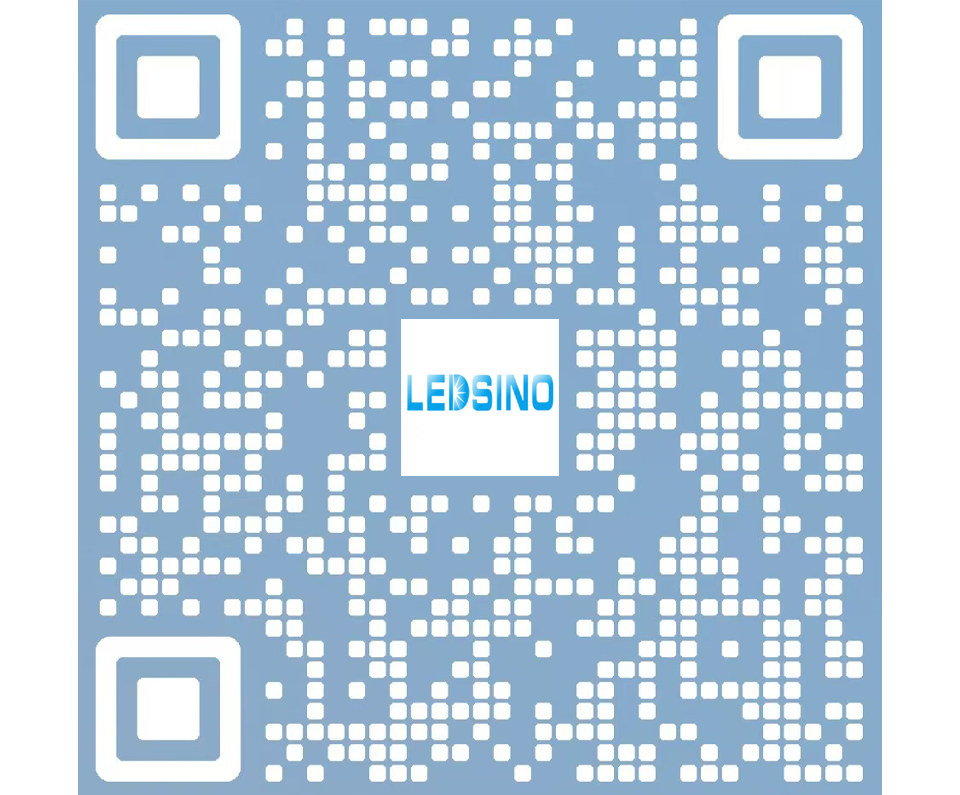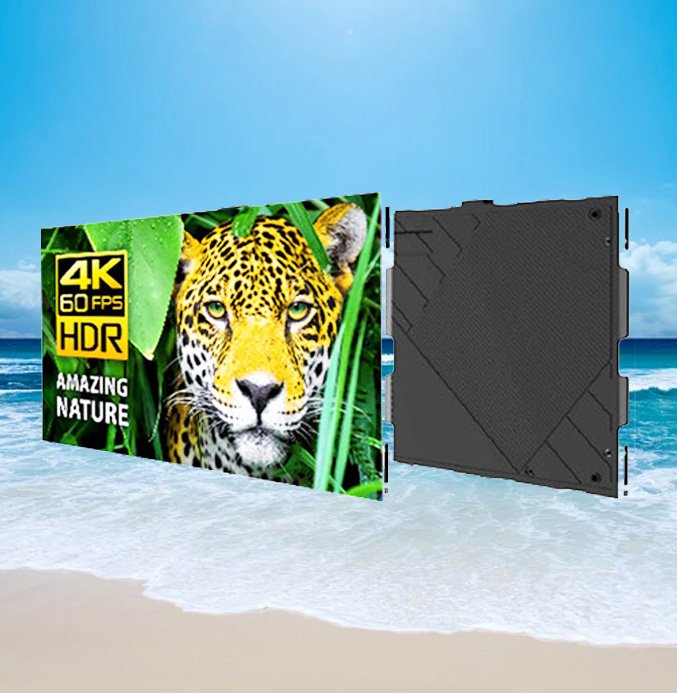
What if you could command your TV by simply lightly touching it: in essence, say goodbye to remotes. LED touchscreen portable television systems are revolutionizing the way people interface with entertainment equipment, style and simplicity with functionality. These TVs are a new generation of convenience and multifunction.
What are Touch Screen LED TVs?
Touch screen LED TVs are display systems that combine a responsive touch interface with a high-definition LED screen. While the current generation TVs require a remote control or voice commands to perform functions such as adjusting volume or selecting channels, these TVs enable users to do all that with just fingers.
With capacitive or infrared touch screen technology, these TVs allow for fine control reminiscent of a mobile touch screen device, but on a larger scale. Advancements in LED technology have made touch screen TVs more energy-efficient, thin, visually high end and bright. They are now mostly present in homes and offices and classrooms, conference, and retail outlets, among other places.
Key Features of Touch Screen LED TVs
Intuitive Touch Controls
Gone are the days of juggling multiple remotes. Modern touchscreen TVs allow users to pinch, swipe, and zoom effortlessly, making interactions seamless. This is particularly beneficial for tech-savvy households and professional environments requiring collaborative tools.
4K and 8K Resolutions
Touchscreen TVs now come equipped with ultra-HD resolutions. Whether you’re watching movies or delivering presentations, the clarity is unmatched, with rich details even in expansive display sizes.
Smart Integration
From streaming apps to smart home controls, these TVs connect effortlessly with Wi-Fi, Bluetooth, and IoT ecosystems. Features like screen mirroring, cloud storage access, and compatibility with AI assistants (e.g., Alexa or Google Assistant) have become standard.
Advanced Durability
With toughened glass screens resistant to scratches and impacts, the latest models are designed to withstand regular usage in high-traffic areas.
Multi-user Collaboration
Commercially, touchscreen TVs support multiple touch points simultaneously, allowing several users to interact with the display concurrently. This makes them a popular choice for education and corporate meetings.
How Touch Screen LED TVs work
Touch screen LED TVs combine advanced display technology with interactive touch functionality, allowing users to control the screen directly with their fingers. These screens operate using two primary technologies, each with unique advantages:
Capacitive Touch Technology:
In capacitive screens, touch is detected by taking advantage of the electrical properties of the human body. Each time the user’s finger comes into contact with the surface of the display, it alters the electrostatic field, uniquely indicating the point of contact.
This incredibly sensitive technology makes it perfect for smooth and precise input. The capacitive touch is used most frequently in premium devices, where responsiveness and multitouch capability are needed, But it can only work when skin or a capacitive stylus touches the screen directly, making it almost impossible to use while wearing gloves.
Infrared (IR) Touch Technology:
Infrared touch screens are a set of invisible light-emitting sensors that span the screen area. Whenever a finger or other object interferes with these beams, sensors detect the location of the interruption. This method is highly durable and suitable for large displays, therefore, they are suitable for commercial or industrial use. Infrared touch has an advantage over capacitive screens because it works with any object, including a glove or stylus, as a touch.
These touch systems are accompanied by LED (Light-Emitting Diode) backlights, which provide a top-notch brightness factor, brilliant color enrichment and energy-saving efficiency. The genuine touch feeling, working in correlation with LED backlighting, significantly creates an inviting, appealing, and fascinating interface.
Benefits of Touchscreen LED TVs
Touch screen TVs cater to a diverse range of applications, offering:
For Home Entertainment
- Streamlined usability: Parents can quickly switch between apps while kids enjoy interactive games.
- Enhanced visuals: Stunning picture quality paired with intuitive control makes movie nights immersive.
For Education
- Interactive learning: Teachers use multi-touch features to engage students in activities like drawing and problem-solving.
- Collaboration tools: These TVs integrate with educational software for remote learning.
For business
- Professional presentations: Teams can annotate directly on slides and share content effortlessly.
- Video conferencing: Built-in cameras and microphones enable seamless remote meetings.
For retail
- Customer engagement: Retailers use touchscreen TVs for interactive product displays.
- Self-service kiosks: Shoppers can browse catalogs or place orders via touch-enabled displays.
The Future of Touchscreen LED TVs in 2024
- Smarter AI Integration
TVs in 2025 will feature advanced AI processors for enhanced user experiences. Companies like Samsung and LG are leading with personalized features such as context-aware voice controls, real-time image optimization, and seamless smart home integration.
- Transparent and Flexible Displays
Transparent displays are moving closer to mainstream use. This trend hints at wider adoption by 2025, making TVs an integral yet discreet part of interior design. Flexible touchscreen technologies are rapidly emerging. There are cases where the products characteristically become foldable or rollable for usage.
- Energy Efficiency and Sustainability
The demand for sustainable technology is increasing on TV makers to bring innovation. Expect increased use of sustainable materials, such as recycled components, and advancements in energy-saving display technologies like Micro LED. These efforts aim to reduce the environmental footprint without compromising performance.
- Advanced Connectivity Features
As more people embrace 5G, TVs should be able to connect wirelessly faster, more establish wireless connections to support streaming, and gaming. Faster rendering time, better clarity, and more vivid colors will be HMDI 2.1’s added features such as low latency and improved frame rates appealing to gamers and tech-savvy individuals.
- Higher Resolution and Immersive Displays
8K displays are still rare nowadays but are likely to become much more prevalent in the near future, thanks to advances in AI upscaling and improvements in panel technology that make screens much brighter and altogether more eye-popping.
Tips for buying a Touchscreen LED TV
Evaluate your needs
- Home use: Focus on display quality and smart features.
- Office use: Look for collaboration tools and multi-user support.
Check compatibility
Ensure the TV integrates with your existing devices and apps. For example, gamers should prioritize models with high refresh rates and HDMI 2.1 ports.
Consider size
Choose a screen size that suits your space. Larger screens are ideal for open spaces, while compact models work well in bedrooms.
Conclusion
Touch screen LED TVs are the next step in entertainment and productivity as touch style meets functional style. Whether replacing a home cinema or preparing a conference hall, these TVs are multifunctional devices intended to improve daily life.

Enter the digital world with our advanced display technologies.


